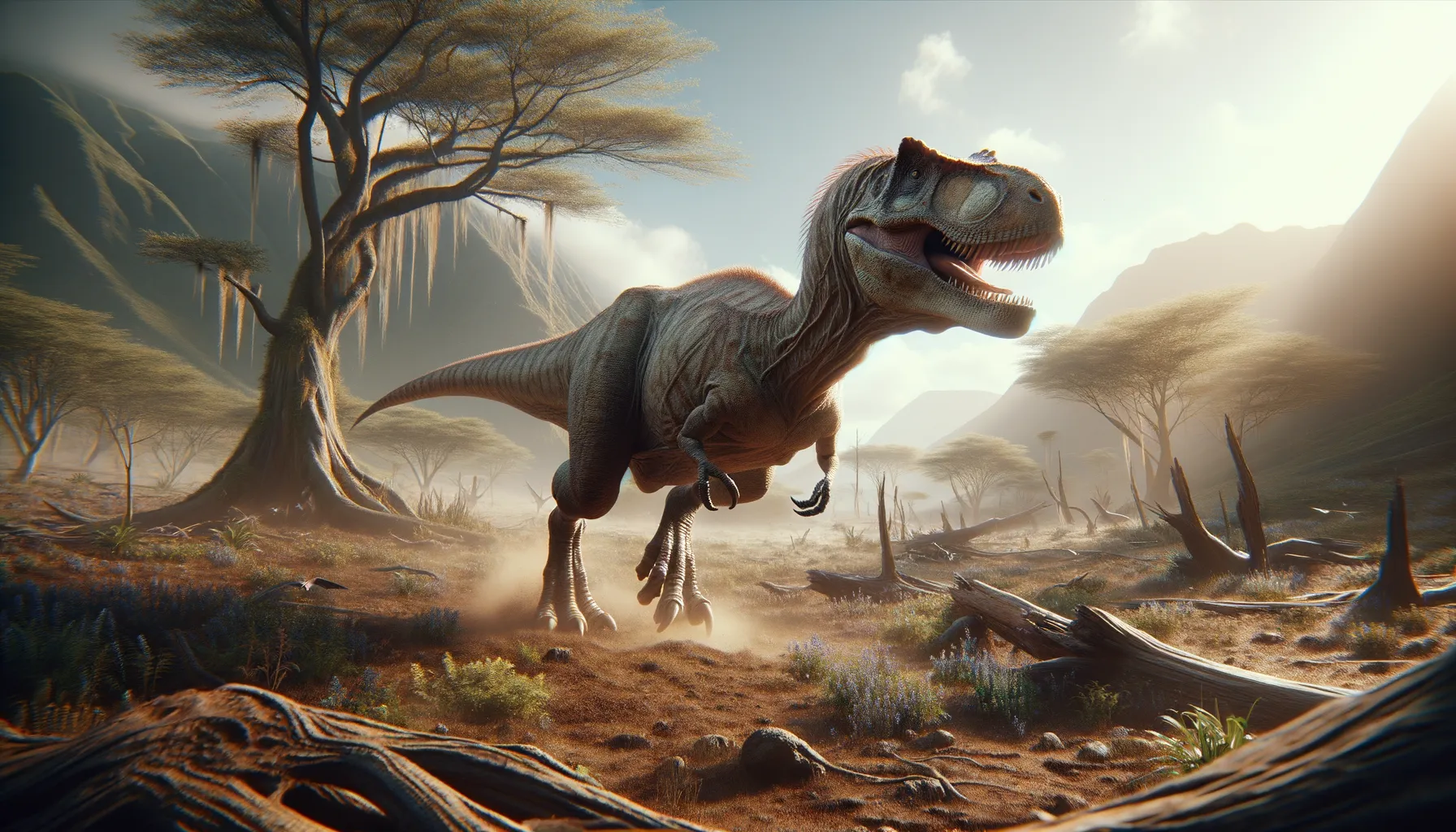
Raptorex
Speedy hunter from the ancient era.
Period
Cretaceous
Length
Reached up to 3 meters long.
Height
Approximately 3 meters tall.
Weight
Weighed up to 150 kilograms.
Raptorex was a small but formidable theropod dinosaur, known for its agility and predatory skills. It lived during the Cretaceous period and showed similar physical traits to its much larger cousins, the Tyrannosaurs. Despite its smaller stature, Raptorex shared many advanced features, such as a robust skull and strong legs, indicating its capability as an efficient predator.
Diet
Raptorex was a carnivore, primarily preying on smaller animals. Its diet likely included small dinosaurs, lizards, and early mammals, capturing prey with sharp teeth and agile movements.
Hunting
Being a swift predator, Raptorex relied on speed and stealth to catch its prey. Its strong hind legs suggest it could sprint rapidly, while its relatively small arms were not primarily used for hunting.
Environmental challenges
Raptorex faced environmental challenges typical of the Cretaceous period, including fluctuating climates and habitat changes. These dinosaurs had to adapt to shifting resources and competition from other predators. Surviving in such an environment required keen senses and opportunistic feeding strategies.
Speed
Considered fast and agile for its size.
Lifespan
Estimated to live around 10 to 15 years.
First discovery
Discovered in China in the early 2000s.
Fun Facts
- Raptorex was a small dinosaur, measuring around 9 feet long, and weighed about 150 pounds, much smaller than its famous relative, the Tyrannosaurus Rex.
- Raptorex lived approximately 125 million years ago, in the early Cretaceous period.
- It had a large head, sharp teeth, and strong legs, making it a formidable predator despite its small size.
- The discovery of Raptorex helped scientists understand the evolution of tyrannosaurids, showing that many features seen in larger tyrannosaurs were present even in smaller ancestors.
- Raptorex fossils were first discovered in what is now northeastern China.
- Unlike large tyrannosaurs, Raptorex likely relied more on speed to hunt its prey.
- Raptorex had proportionately large arms compared to its body size, unlike the famously tiny arms of its larger relatives.
Growth and Development
Raptorex showed rapid growth during its early years, similar to other theropods. Its development involved quickly gaining size and strength to compete in its predator-filled ecosystem. Juveniles likely had different coloring for camouflage until they reached maturity.
Habitat
Raptorex inhabited areas that were likely a mix of forests and open landscapes, enabling it to exploit various types of prey. These environments would have provided both cover for ambush hunting and open spaces for high-speed chases.
Interaction with other species
Raptorex potentially encountered larger predators, which might have posed threats. It also competed with similar-sized theropods for food. Its place in the ecosystem was both as a predator and a scavenger, interacting dynamically within the food chain.
Natural lifespan
In the wild, Raptorex might have lived for around 10 to 15 years.
Reproduction
Raptorex likely laid eggs in nests, similar to other theropods. Parental care might have been minimal, with young often left to fend for themselves. This reproductive strategy involved producing numerous offspring to ensure some survived to adulthood.
Social behaviour
Raptorex might have been solitary or formed loose groups when necessary, such as during hunting or breeding seasons. Social interactions would have revolved around competition for food and mating opportunities.
Fossil locations
Fossils of Raptorex were mainly discovered in what is now northeastern China. These discoveries have provided significant insights into the evolution of smaller tyrannosaurids. The location and conditions of these fossil beds have helped paint a clearer picture of their environment and lifestyle.
